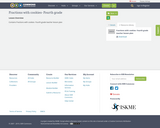
Contains Fractions with cookies- Fourth grade teacher lesson plan
- Subject:
- Elementary Education
- Material Type:
- Lesson Plan
- Author:
- Meghan Haley
- Date Added:
- 07/15/2019

Contains Fractions with cookies- Fourth grade teacher lesson plan

Ready to have a fun and learning-centered activity for your students? You've come to the right place! For this activity, we will be including physical interaction from the students. This will include attempting to form words with their bodies, and other physical movemements of your choosing. This activity comes in two parts. Most useful to students in early elementary grades, Kindergarten -- 2nd grade

INTRODUCTION In this part the students can practice with some exercises in order to improve their skills.

This resource provides both the instructional lecture of the lesson in part one and the interactive gamification of the lesson in part two. Lesson one focuses more on the theory about trees and leaves. A PowerPoint is used as an aid in the lecture, and Kahoot is used to test the students knowledge about the presented content. Lesson two focuses on taking the content learned in lesson one and applying it through a scavenger hunt game. Students are given a list of trees and leaves to hunt. They must work together with their group to find as many as they can. As they search, the must take a photo of their findings and upload it to Padlet. These photos will be used later in an upcoming video project and used to document points. Each item on the list is worth a certain amount of points; points will be tracked through Padlet. Whatever team has the most points wins.

This is a two part lesson for the Grade 6 level of students, to better understand the 4 learning techniques: aural, read/write, visual, and kinesthetic. By following the Inclusive Education guidelines on the Alberta Program of Studies, students will be more inclusive to their peers, and have a better undestanding of how they may learn in similar ways, but also the different ways as well. This lesson is created by Anthony Prakash, Lexi Perepelecta, and Taylor Sim.
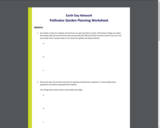
Learn how to make a pollinator garden and use the planning worksheet to start planning one for your home or school from Earthday.org!

In this 6th grade Science class, students learn how to build a compost pile, learn about organisms needed for decomposition, and begin to understand the purpose of compost in the garden.

This activity is intended to stimulate deeper student thinking in response to an image with questioning.

In this resource we talk about Gifted and talented students and how being in the program effects them. As they are usually put into a sterotype we wanted to share how in reality they are all different and learn and adapt in different wyas. They also need a lot of emotional support in which we talk about mental health too!
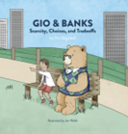
Within this collection you will find lessons, videos, handouts, and teacher guides you can use in your classroom. You will also find a brief summary of each resource with the source sited for further exploration, appropriate grade level, approximate lesson length, and learning standards.
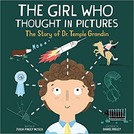
Within this collection you will find lessons, videos, handouts, and teacher guides you can use in your classroom. You will also find a brief summary of each resource with the source sited for further exploration, appropriate grade level, approximate lesson length, and learning standards.
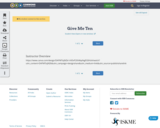
https://www.canva.com/design/DAFNF5sJNZk/-tHDvP2XX4bpfegFl26HzA/watch?utm_content=DAFNF5sJNZk&utm_campaign=designshare&utm_medium=link&utm_source=publishsharelink
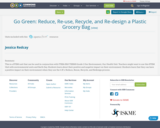
This is a STEM unit that can be used in conjunction with ITEEA EbD TEEMS Grade 2 Our Environment, Our Health Unit. Teachers might want to use this STEM Unit with environmental units and Earth Day. Students learn about their positive and negative impact on their environment. Students learn that they can have a positive impact on their environment when they use the 4 R’s: Reduce, Reuse, Recycle, and Redesign process.

This is a STEM unit that can be used in conjunction with ITEEA EbD TEEMS Grade 2 Our Environment, Our Health Unit. Further, teachers might want to use this STEM Unit with environmental units and Earth Day. Students learn about their positive and negative impact on their environment. Students learn that they can have a positive impact on their environment when they use the 4 R’s: Reduce, Reuse, Recycle, and Redesign process.
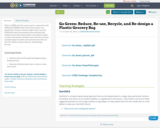
This is a STEM unit that can be used in conjunction with ITEEA EbD TEEMS Grade 2 Our Environment, Our Health Unit. Further, teachers might want to use this STEM Unit with environmental units and Earth Day. Students learn about their positive and negative impact on their environment. Students learn that they can have a positive impact on their environment when they use the 4 R’s: Reduce, Reuse, Recycle, and Redesign process.

This is a card that can be used to describe different places like one's home country, city or town. The main objective is to practice describing the different characteristics of a place.

This sequence of instruction was developed to help elementary teachers who are working remotely. We developed a short storyline that ties together a few sessions to help explore a specific concept. We tried to include some activities that honored and included the student’s family and experience, and some that included the potential for ELA learning goals. "Good Vibrations" is designed around students making observations of sounds and the way sounds are transmitted to answer the questions: How can improve the design of a string telephone?(How does sound behave in and between different materials?) It is part of Clime Time - a collaboration among all nine Educational Service Districts (ESDs) in Washington and many Community Partners to provide programs for science teacher training around Next Generation Science Standards (NGSS) and climate science, thanks to grant money made available to the Office of the Superintendent of Public Instruction (OSPI) by Governor Inslee.

This sequence of instruction was developed in the Growing Elementary Science Project to help elementary teachers who were working remotely. We developed a short storyline that ties together a few sessions to help explore a specific concept. We tried to include some activities that honored and included the student’s family and experience, and some that included the potential for ELA learning goals.Unlike other units in our series, this was not developed as a complete stand-alone unit. Our intent, in this case, was to provide a set of options for the teacher, as well as some materials for consideration of opportunities to integrate reading in science.It is part of ClimeTime - a collaboration among all nine Educational Service Districts (ESDs) in Washington and many Community Partners to provide programs for science teacher training around Next Generation Science Standards (NGSS) and climate science, thanks to grant money made available to the Office of the Superintendent of Public Instruction (OSPI) by Governor Inslee.
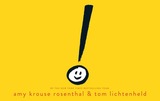
This lesson plan was created by Dawn Spurck as part of the 2020 NDE OER Project. The attached lesson plan is designed for Grade K English Language Arts students. Students will demonstrate their understanding that exclamation marks show something very exciting or make a strong statement. Students will also give oral feedback on written sentences. Students will proofread and make edits to sentences they write. This lesson plan addresses the following NDE Standard: NE LA O1.1.b, NE LA 0.1.1.e, NE LA 0.1.1.f, NE LA 0.2.1 f, and NE LA 0.2.1.h.It is expected that this lesson will take students 15-20 minutes to complete.

Elementary Science and Integrated Subjects is a statewide Clime Time collaboration among ESD 123, ESD 105, and the Office of Superintendent of Public Instruction. Development of the resources is in response to a need for research- based science lessons for elementary teachers that are integrated with English language arts, mathematics and other subjects such as social studies. The template for Elementary integration can serve as an organized, coherent and research-based roadmap for teachers in the development of their own NGSS aligned science lessons. Lessons can also be useful for classrooms that have no adopted curriculum as well as to serve as enhancements for current science curriculum. The EFSIS project brings together grade level teams of teachers to develop lessons or suites of lessons that are 1) focused on grade level Performance Expectations, and 2) leverage ELA and Mathematics Washington State Learning Standards.